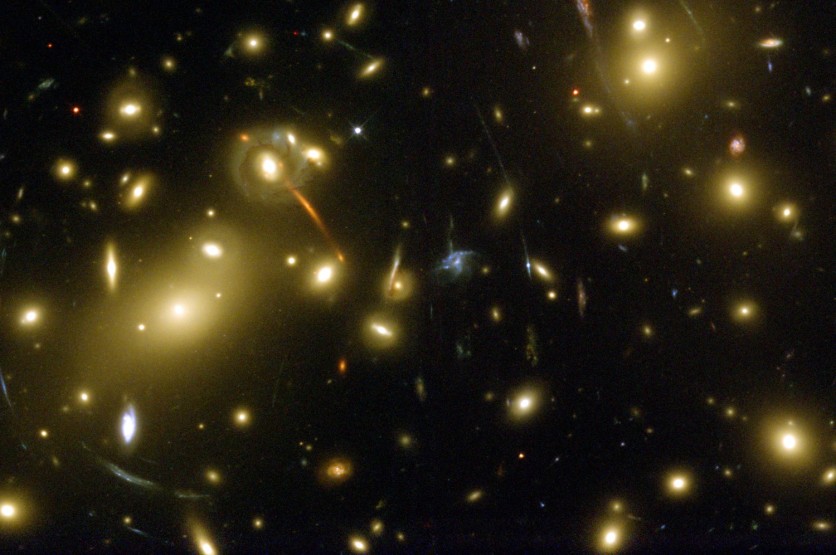Scientists might have just found the "fifth force" working in space. According to them, this force might be mediated by a hypothetical particle called "symmetron" or also known as "domain walls", which are responsible for bolstering the creation of invisible walls in space.

(Photo : NASA/Getty Images)
395823 02: (FILE PHOTO) NASA researchers have discovered a small distant galaxy located approximately 13.4 billion light-years away from our planet. This image was captured by the Hubble Telescope.
However, these walls are not the literal walls you see in a room, but they serve as invisible barriers. This discovery holds significance since it could resolve one of the greatest mysteries in space that even scientists have been struggling to answer for years.
"Discovery of New Physics"
The researchers from the University of Nottingham found that their new study could lead toward a first potential "new physics" explanation that is still grounded in dark matter. It is worth noting that dark matter is responsible for the majority of mass in the universe, and it happens to be one of the universe's greatest mysteries, according to BGR.
In contrast to the previous studies regarding the dark matter, this recent study suggests that the hypothetical particles called symmetrons are generating these invisible walls in space. These domain walls are believed to hold the galaxies in their refined orbits.
The researchers of this new study noted that there is a "50/50 chance" that symmetrons will force space regions to adopt different values and could possibly explain the differences between larger galaxies with smaller galaxies orbiting in them compared to others.
However, this is still a proof of concept. In order to prove that there are indeed invisible walls in space, the burden that symmetrons exist must be fulfilled first. Space instruments like the James Webb telescope and many more could be beneficial in this possible endeavor since they study how the universe was formed in its early stages.
Space instruments could broaden our scientific knowledge about these new particles and how they contribute to the grander scheme of the universe.
"Satellite Disk Problem"
To explain the quirks and mysteries of cosmology, we have to employ the current standard model called the Lambda cold dark matter (ΛCDM). However, this model is not enough to solve one of our long-standing problems in space.
The Lambda model presupposes that small galaxies should be scattered in messy orbits around larger galaxies, but the majority of the small galaxies orbiting their large counterparts are arrayed in thin flat planes.
According to BGR, these disks or planes are strikingly similar to the rings of Saturn, which looks like there is an invisible wall in space that sets these galaxies into an arranged order.
Astronomers often refer to these walls as "satellites, which can be located in synced-up orbits all over our galaxy, and they have observed them in neighboring galaxies as well.
Over the past few years, experts have proposed several explanations that could solve the satellite disk problem. But this new study from the University of Nottingham presents a fresher explanation of the built-up of these space walls and possibly solves this long-standing mystery once and for all.
Related Article : NASA Captures Fall of a Colorful Swirl Into Milky Way's Black Hole
This article is owned by Tech Times
Written by Joaquin Victor Tacla
ⓒ 2025 TECHTIMES.com All rights reserved. Do not reproduce without permission.




